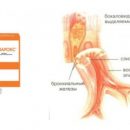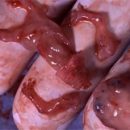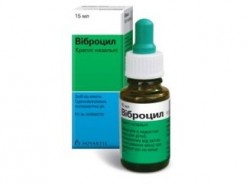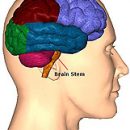Glycine for children: impact method
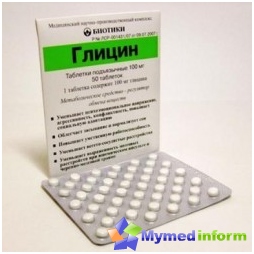
If you disassemble this drug to the components, then we can say that glycine In essence, this is an amino acid, the same as it is contained in some food products, as well as in breast milk of mother. Glycine is shown in many states, for example, from depression, all species neurosis, different violations of brain activity, including hypoxia, which very often lifts newborns immediately after the appearance of.
In the brain of the child glycine regulates various processes: inhibition or excitement, calm and sleep. In sufficient concentration in the body, this drug is able to facilitate excessive motor activity, improve attention and focus. Due to the fact that the processes of sharp braking of the nervous system are intensified, glycine improves the mood and allows the child to adapt normally in the environment.
The drug glycine has the following effect on the body:
- regulates metabolism;
- normalizes braking processes in the central nervous system;
- increases mental activity and performance;
- removes psycho-emotional stress, anxiety;
- has antitoxic and antioxidant properties;
- reduces aggressiveness, improves the adaptation in the environment;
- Easy sleep, eliminates insomnia;
- Neutralizes the symptoms of vegetative-vascular dystonia and brain disorders. In children who have suffered injuries of the head and brain, reduces the level of negative consequences;
- Glycine successfully blocks adrenaline production, and reduces the harmful effects of toxins;
- Does not allow free radicals to penetrate the nerve cells, adjusting the activity of receptors. This largely allows you to reduce the degree of mental disorder and emotional stress;
- Glycine neutralizes the effect of toxins from alcohol and medicines that affect the body and depressing the central nervous system.
This amino acid is perfectly soluble in tissues, quickly penetrating into all biological fluids. Glycine does not accumulate in the body, and after its dissolution is converted into water and carbon dioxide. Unlike many drugs that should be taken for months in order for their impact, Glycine is valid once. That is, it facilitates the general condition after the first reception.
The drug is shown to children at any age, starting from birth. The main thing is the choice of the correct dosage and the available form of application. The smallest kids are preferably chopped with powder pills, dissolving in a small amount of water. Older children can be given the entire drug, or dividing the tablet to pieces.
Glycine for children of different ages
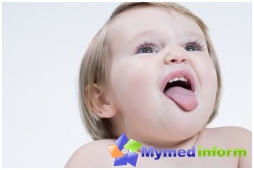
All the intricacies of admission of the sedative for his child should be clarified by the attending pediatrician. Of great importance in the preparation of the reception schedule has the age of a child, which is prescribed it, as well as the individual reaction to glycine.
Children up to four years are recommended to give 0.5 tablets three times a day. Dissolve in water do not need to not coal the effect of the drug. The fact is that in the dissolved form of glycine is practically not absorbed.
Schoolchildren can already take a tablet entirely without grinding. Since Glycine has a pleasant sweet taste, then the child will not disgust for the drug, and he will be happy to take it.
Regardless of the age of the child, the number of techniques remains unchanged - 2 or 3 times a day. The optimal course of therapy is from seven to fourteen days.
Method of application - sublingual, that is, by resorption of glycine tablets, from where it is from the mucous membrane further goes into the blood.
Methods of using glycine for newborns:
- in the form of a solution. Distribute the required amount of the drug into the powder, and then dilute it with a small amount of clean water. Carefully pour the baby in the mouth;
- You can dissolve glycine in milk, or to dip a pacifier into powder, after which offer the medicine to the baby;
- Pure wet finger take a small amount of powder and smear them the mouth mucosa, trying to cover the site under the tongue and behind the cheeks;
- You can try to give glycine newborn together with breast milk. Everything is simple here, to take the drug should mom, and part of the active substance will be excreted in milk and will go into the body of the kid. Thus, the child will receive his dose of nootropic agent most enjoyable and harmless way.
special instructions
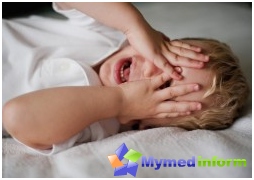
In most cases, glycine is well tolerated by a children's body, quickly absorbed into blood and does not have severe side effects. Sometimes there is a small rash on a body, which, as a rule, passes after the discharge of the drug or reduced dosage. During the first two hours and several days of reception of glycine, our site recommends that changes in the well-being and behavior of the child in order to notice in a timely manner, whether this drug is suitable for him.
Basically, various troubles happen due to the fact that not all parents consult with the pediatrician before the appointment of glycine and are engaged in self-medication. Among the possible side effects that are due to the improper use of glycine, the following can be noted:
- fainting;
- insomnia and nightmares at night;
- anxiety;
- braking nervous reaction;
- Psyche disorder.
The above problems can be avoided, if you correctly approach the use of amino acids, using glycine to appoint a doctor and complying with the allowable dosage.
According to children's psychologists, there is nothing bad in the use of glycine, and it is really very often prescribed to children. The drug is safe and effective for the children's body, besides, the positive effect of receiving glycine is manifested quickly at the very beginning of treatment.
Doctors do not recommend taking glycine simultaneously with antidepressants and other psychotropic drugs, since glycine and any other means for oppression of the central nervous system significantly reduce each other's action. If you give the drug to children up to a year, then strictly as a suspension. It is important to prevent the child choker the tablet.
An additional indisputable advantage of this fund is its versatility. Glycine not only works as active sedative, but also as a medicine, stimulating brain activity. Minor dosage adjustment helps to achieve the desired results without the need to replace the drug. And, most importantly, Glycine is not addictive at all.
The opinions of parents regarding this drug were divided. Some believe that glycine components negatively interfere with the health of the child and similarly affect the work of its central nervous system. On the other hand, some parents are well aware of the fact as badly affecting the mental health of children frequent concerns, insomnia and poor concentration of attention. Competently chosen dosage of glycine effectively copes with similar problems without harming the kid.

